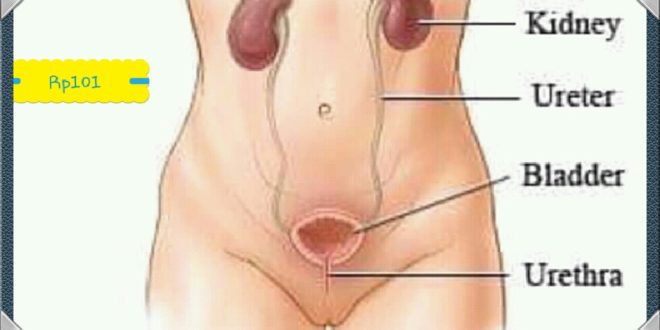Urinary tract infection (UTI) is an infection of the urinary system. This system comprises of the kidneys, ureters, bladder and urethra. Many of UTIs always involve the lower urinary tract that is the bladder and the urethra.
In comparison to men, women are at greater risk of developing a UTI. This is due to the nature of their urinary system.
UTIs in women are limited to the bladder and can be painful and annoying. If UTIs spread to the kidneys, it can have serious consequences.
Read also: See how birth control pill disabled woman
Generally, UTIs are treated with antibiotics. It can also be prevented by taking some specific steps.
SYMPTOMS :
Although UTIS can present with or without symptom, below are few common symptoms.
A strong, persistent urge to urinate.
A burning sensation when urinating.
Passing frequent, small amounts of urine.
Urine that appears cloudy.
Urine that appears red, bright pink or cola-colored — a sign of blood in the urine.
Strong-smelling urine.
Pelvic pain, in women — especially in the center of the pelvis and around the area of the pubic bone.
It is of importance to note that UTIs may be overlooked or mistaken for other conditions in older adults.
Signs of Kidney Infection ( Type of UTI)
Upper back and side (flank) pain
High fever.
Shaking and chills
Nausea
Vomiting
Signs of Bladder infection ( Type of UTI)
Pelvic pressure/ discomfort
Blood in urine
Frequent urination
Abdominal discomfort.
CAUSES
Urinary tract infections typically occur when bacteria enter the urinary tract through the urethra and begin to multiply in the bladder.
Infection of the bladder (cystitis). This type of UTI is usually caused by Escherichia coli (E. coli),
Sometimes other bacteria are responsible. Sexual intercourse may lead to cystitis, but you don’t have to be sexually active to develop it. Because of their anatomy, all women are at high risk of cystitis.
Two factors in women are important here: the short distance from the urethra to the anus and the urethral opening to the bladder.
Also, because the female urethra is close to the vagina, sexually transmitted infections, such as herpes, gonorrhea, chlamydia and mycoplasma, can cause urethritis.
Urinary tract infections are common in women, and many women experience more than one infection during their lifetimes.
Female anatomy. A woman has a shorter urethra than a man does, which shortens the distance that bacteria must travel to reach the bladder.
Sexual activity. Sexually active women tend to have more UTIs than women who aren’t sexually active.
Having multiple sexual partners increases your risk.
Certain types of birth control. Women who use diaphragms for birth control may be at higher risk, as well as women who use spermicidal agents.
Menopause. After menopause, a decline in circulation of estrogen causes changes in the urinary tract that make women more vulnerable to infection.
Urinary tract abnormalities. Babies born with urinary tract abnormalities that don’t allow urine to leave the body normally. Or cause urine to back up in the urethra have an increased risk of UTIs.
Blockages in the urinary tract. Kidney stones or an enlarged prostate can trap urine in the bladder and increase the risk of UTIs.
A suppressed immune system. Diabetes and other diseases that impair the immune system — the body’s defense against germs — can increase the risk of UTIs.
Catheter use. People who can’t urinate on their own and use a tube (catheter) to urinate have an increased risk of UTIs. This may include people who are hospitalized, people with neurological problems that make it difficult to control their ability to urinate and people who are paralyzed.
A recent urinary procedure. Urinary surgery or an exam of your urinary tract that involves medical instruments can both increase your risk of developing a urinary tract infection.
Complications
Recurrent infections, especially in women who experience three or more UTIs.
Permanent kidney damage due to an untreated UTI.
Increased risk in pregnant women of delivering low birth weight or premature infants.
Sepsis, a potentially life-threatening complication of an infection, especially if the infection works its way up your urinary tract to your kidneys.
Tests and diagnosis
Analyzing a urine sample.
Growing urinary tract bacteria in a lab.
Creating images of your urinary tract. If you are having frequent infections that your doctor thinks may be caused by an abnormality in your urinary tract,
Using a scope to see inside your bladder.
Treatment lies mostly in the use of the effective Antibiotics










